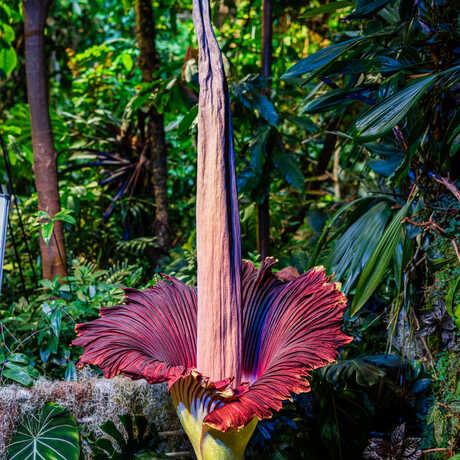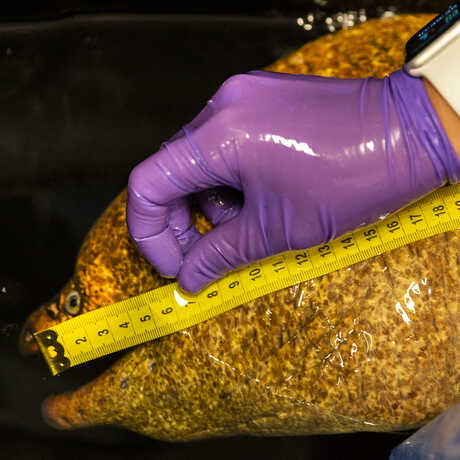It’s Alive! Our Corpse Flower Is Blooming
UPDATE (March 2): Mirage's brief but brilliant bloom has now ended. Thank you for visiting the museum, tuning in to the livestream, and being corpse flower-curious this past week. Enjoy the time-lapse video above and gallery below!
Welcome to Osher Rainforest, home to free-flying tropical birds and butterflies, giant Amazonian river fish—and a cartoonishly large, incredibly rare flower that smells like death.
Mirage is our corpse flower's name, and after five years of quietly growing and storing energy underground, it’s preparing to produce its first spectacular (and stinky) bloom.
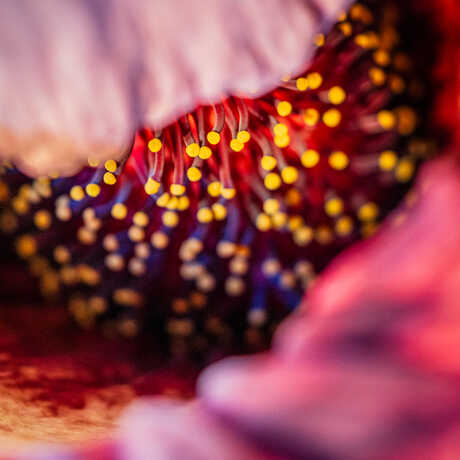
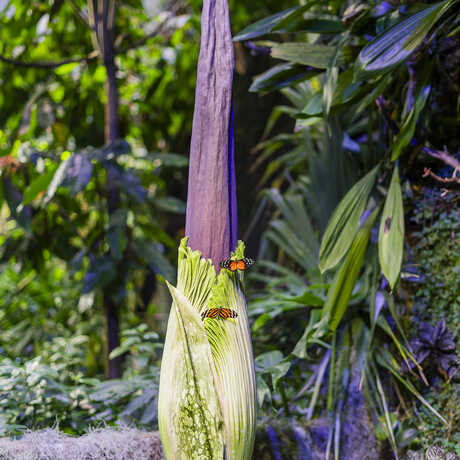

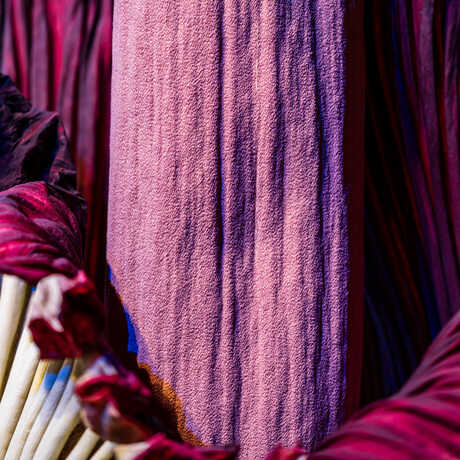
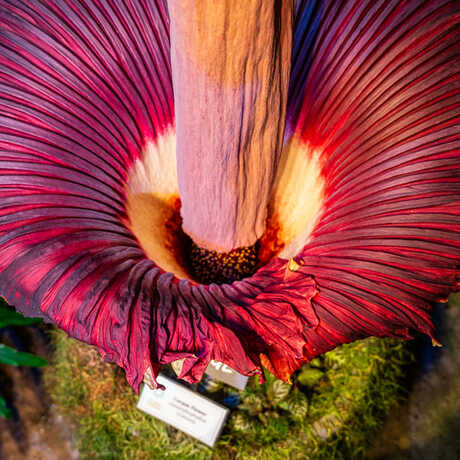
Corpse flowers (Amorphophallus titanum) are related to peace lilies, Monstera, Anthuriums, Philodendrons, and other aroids, and are the largest unbranched inflorescence (aka, group of smaller flowers acting as one) in the plant kingdom. Native to the Indonesian island of Sumatra, corpse flowers are listed as Endangered on the IUCN Red List, with less than 1,000 individuals remaining in their natural habitat.
Mirage was donated to the Academy by the Conservatory of Flowers in 2017, and was moved onto exhibit in Osher Rainforest in December 2020. Our biologists estimate that our bloom may reach 5-7 feet tall and 2-3 feet in diameter. In the wild, corpse flowers can grow over 10 feet tall!
Mirage began to bloom on the afternoon of Tuesday, February 27, reached peak potency on Wednesday, the 29th, and concluded its bloom on Friday, March 1.
While it is no longer blooming, you can still see Mirage (without its characteristic spiky spadix) on exhibit in Osher Rainforest, which opens at 10 am Monday-Saturday, and 11 am on Sundays. Last entry is at 4:30 pm daily.
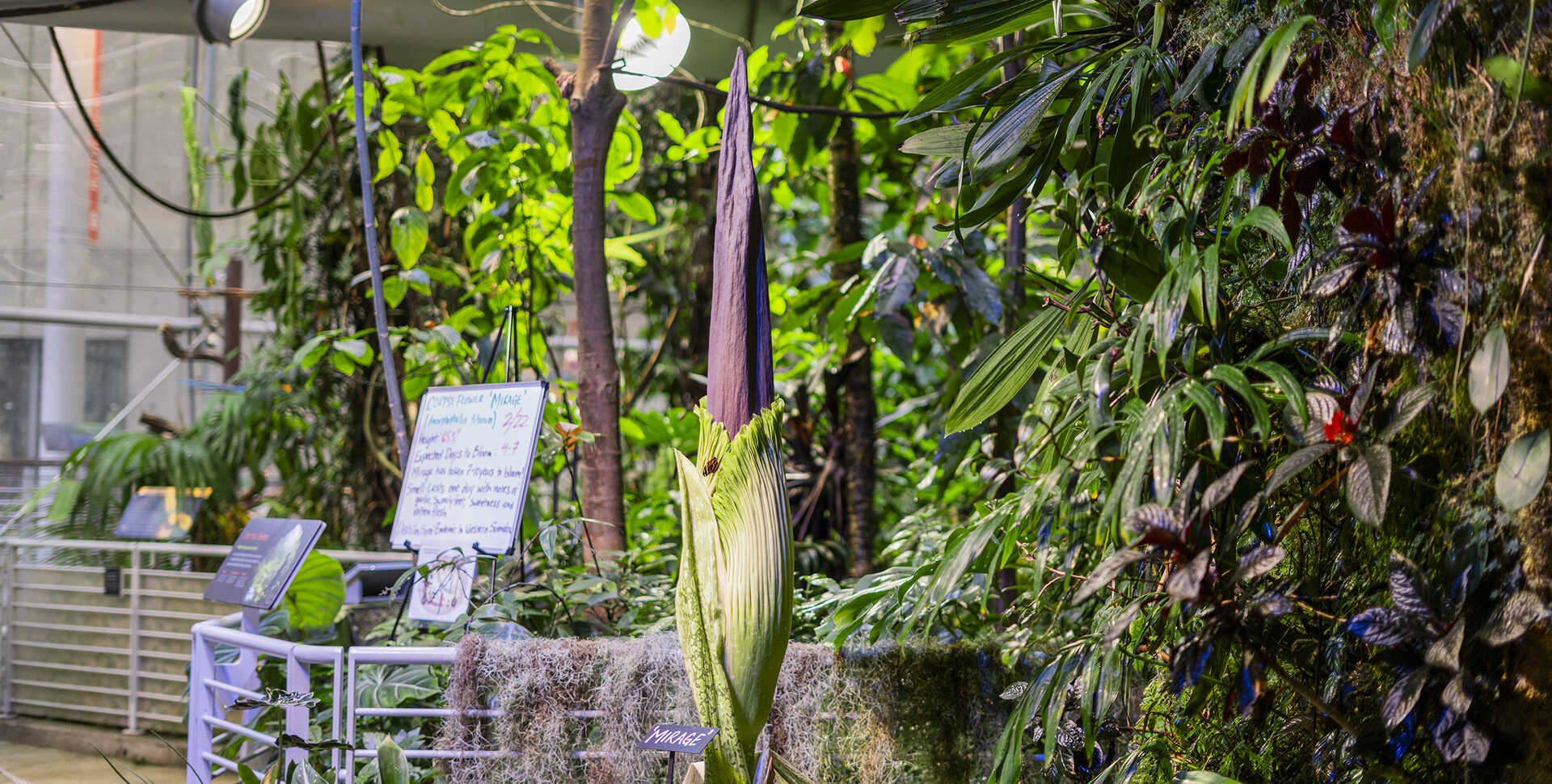
“Bad” is a relative term. Corpse flowers may smell unpleasant to human noses, but they’re irresistible to the carrion beetles and flies they rely on for pollination. Their unique aroma arises from a quartet of chemical compounds produced in the flower’s spadix, or spike: Dimethyl trisulfide (rotting onions or cabbage), dimethyl disulfide (garlic), trimethylamine (rotting fish), and isovaleric acid (sweaty socks).
The smell will likely begin the afternoon of the bloom’s opening, and will peak later that same night. While the odor will certainly be strong, it’s unlikely to be too offensive for guests. That being said, deep whiffs are only advisable for those with strong sinuses.
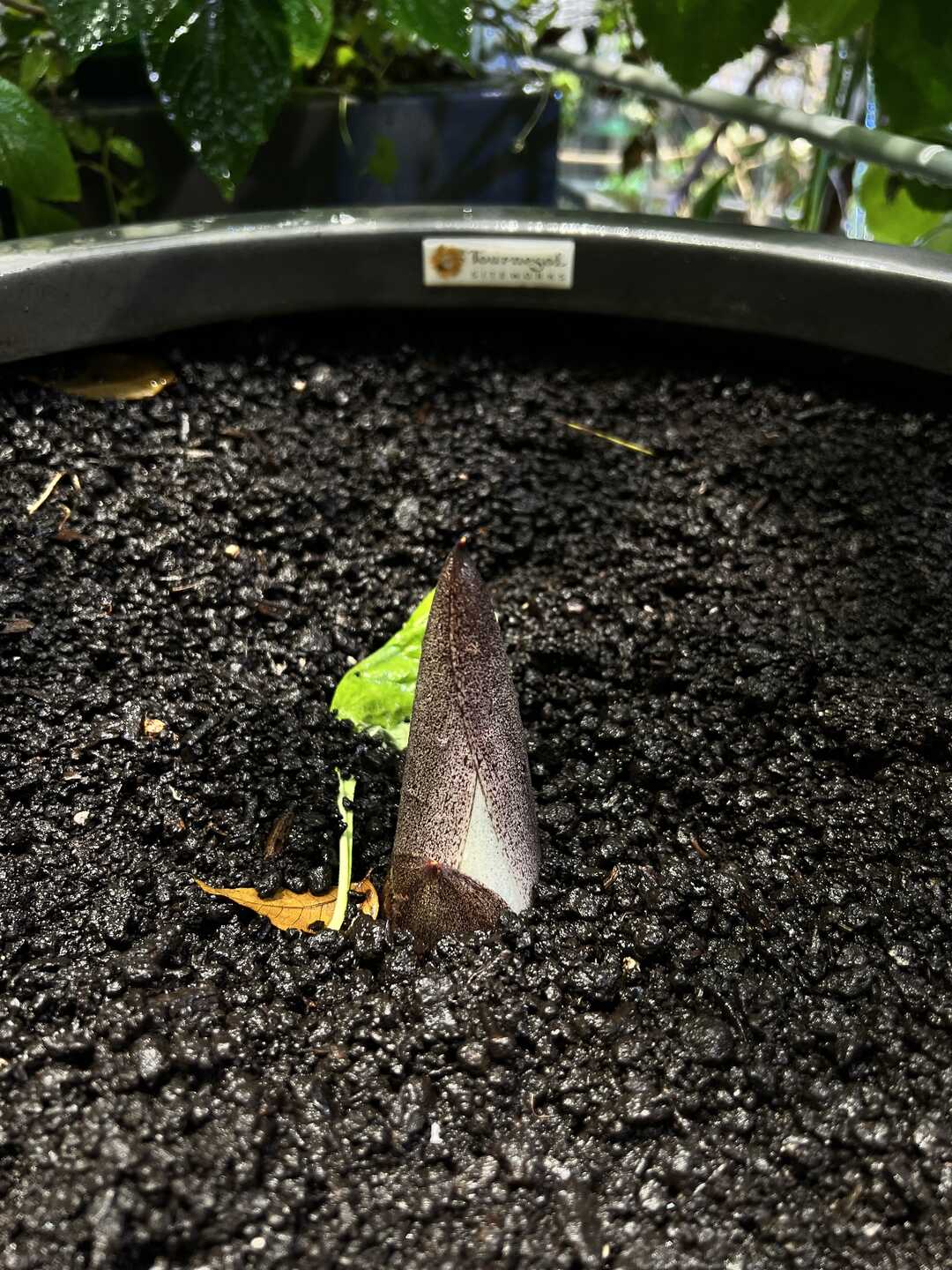
Baby Mirage on January 21...
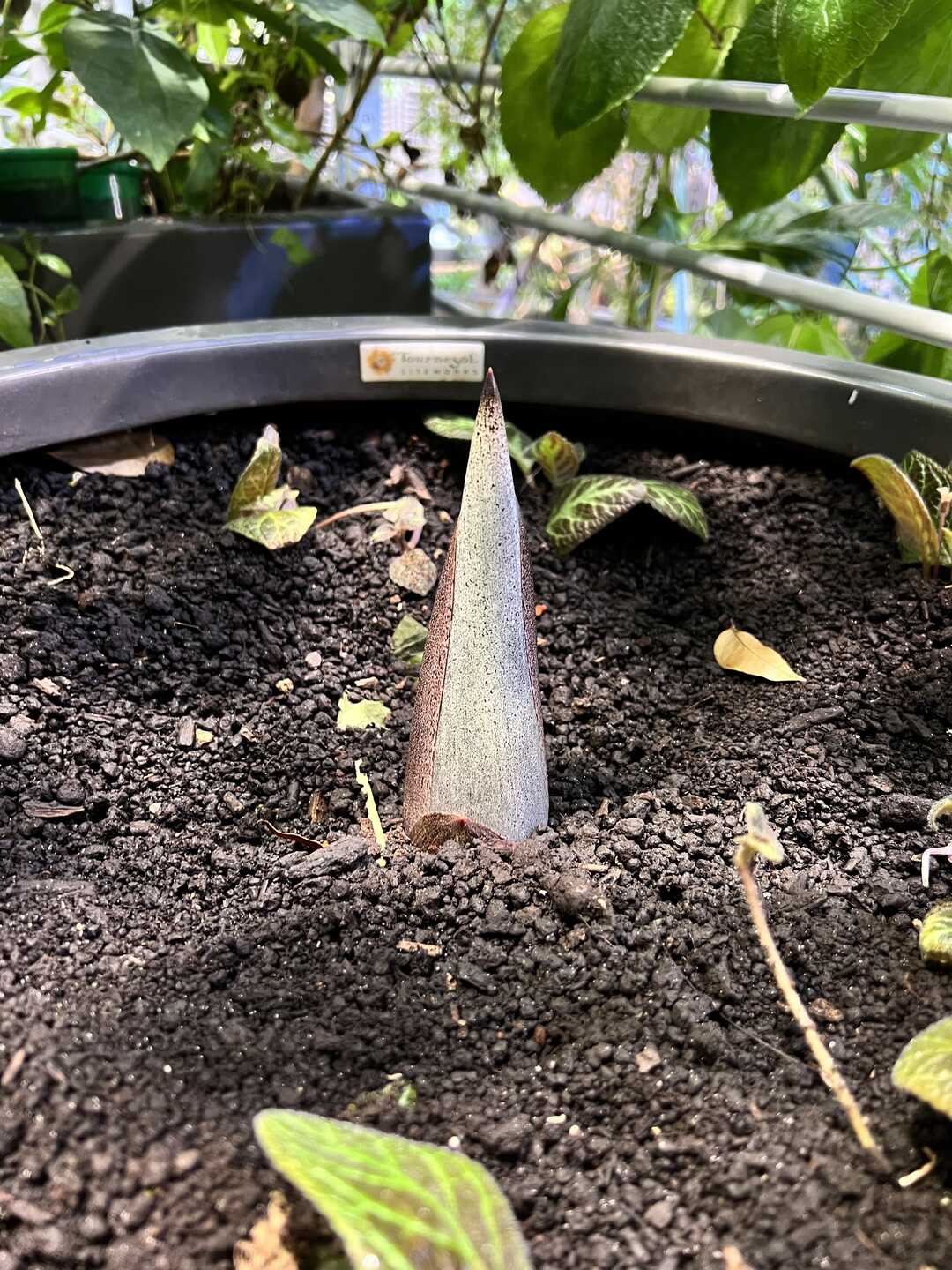
Toddler Mirage on January 24...
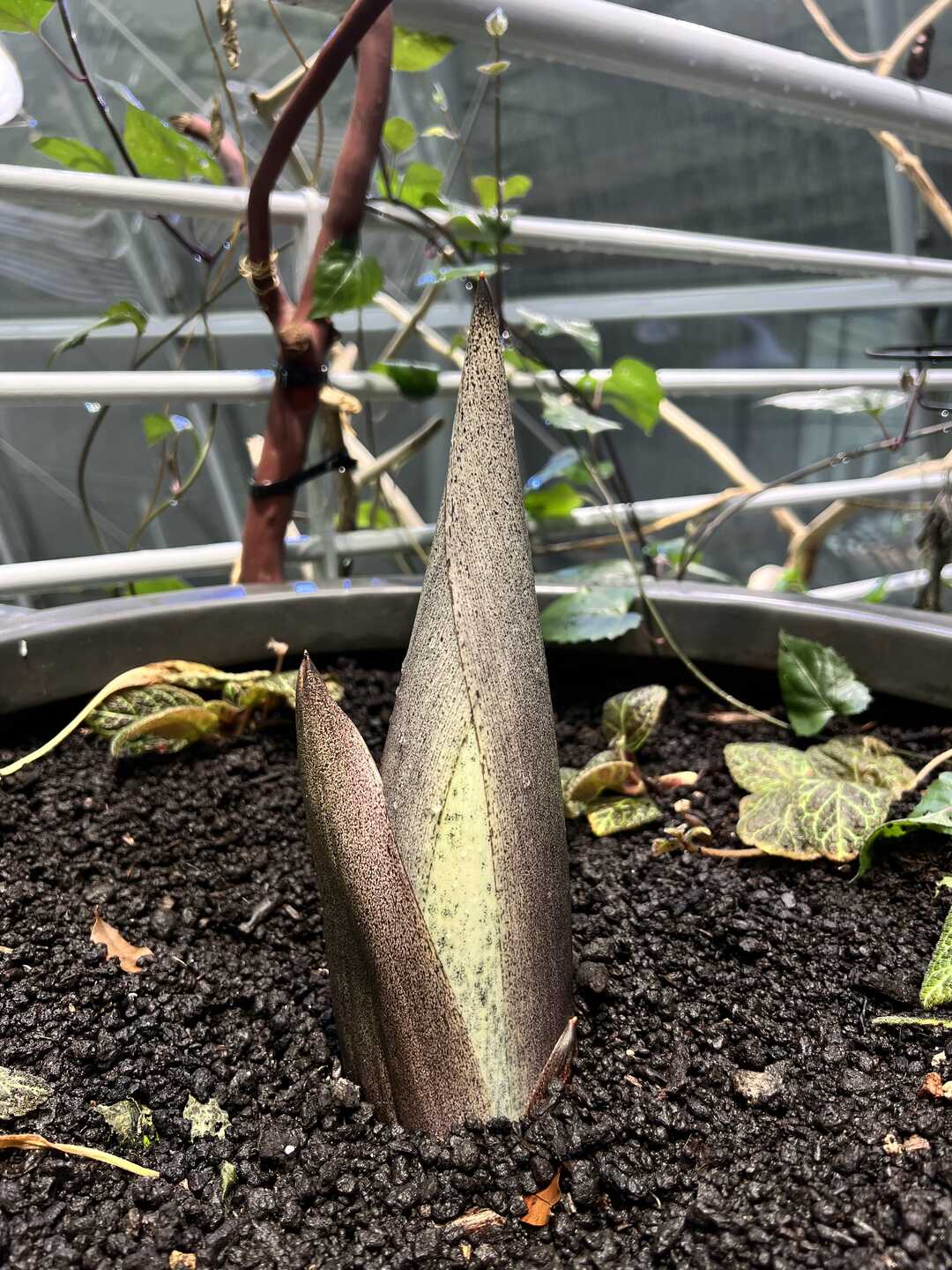
Tween Mirage on January 28...
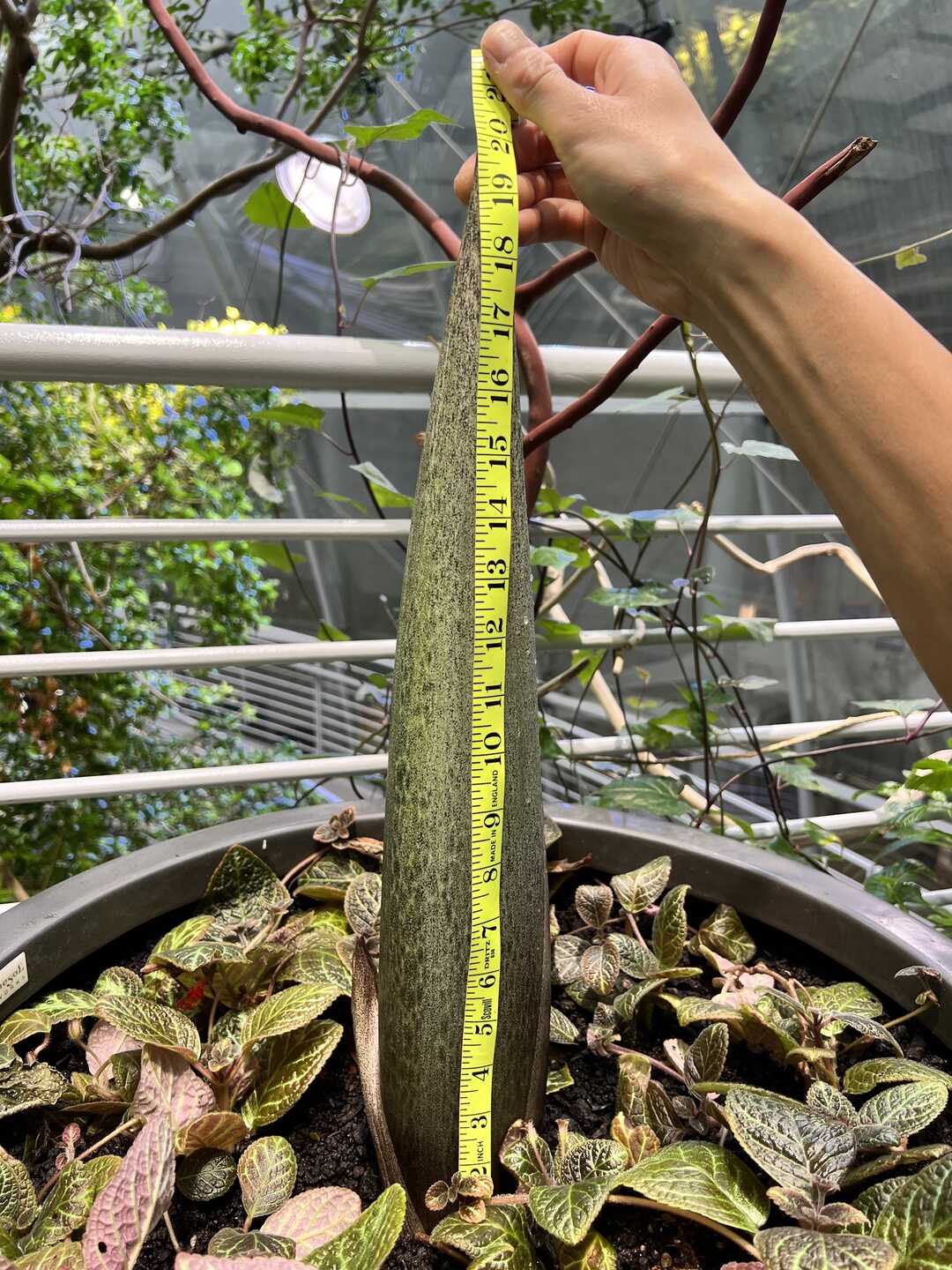
Teen Mirage on February 5...
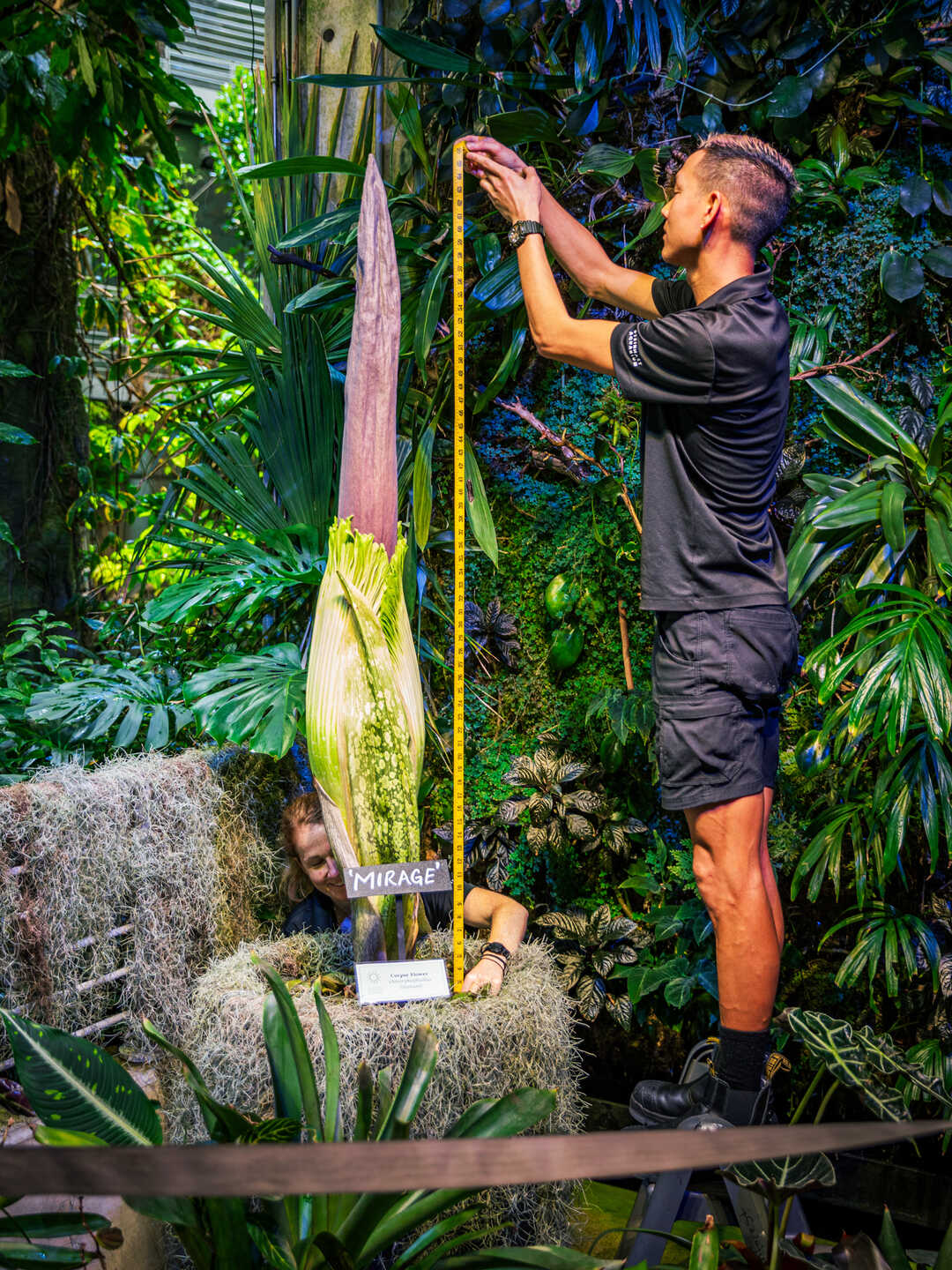
...Young adult Mirage on February 22! Biologists Lauren Greig and Tim Wong are on daily measurement duty. Gayle Laird © 2024 California Academy of Sciences

Mirage in full bloom on February 28, posing with her dedicated team of Academy biologists! Gayle Laird © 2024 California Academy of Sciences

